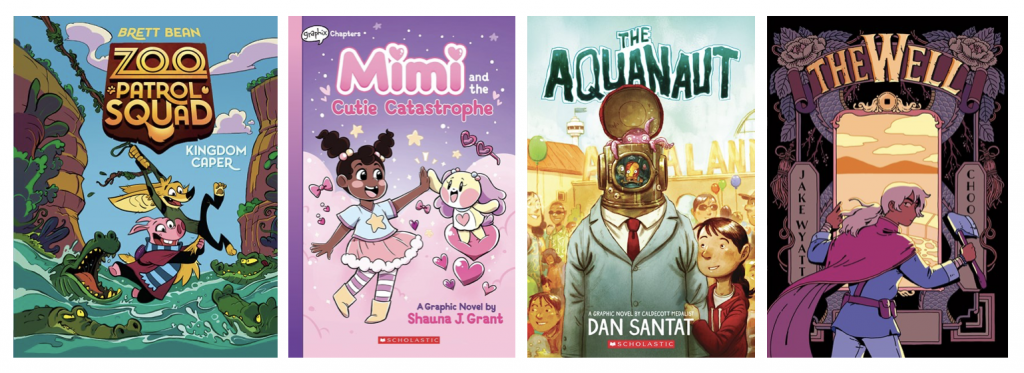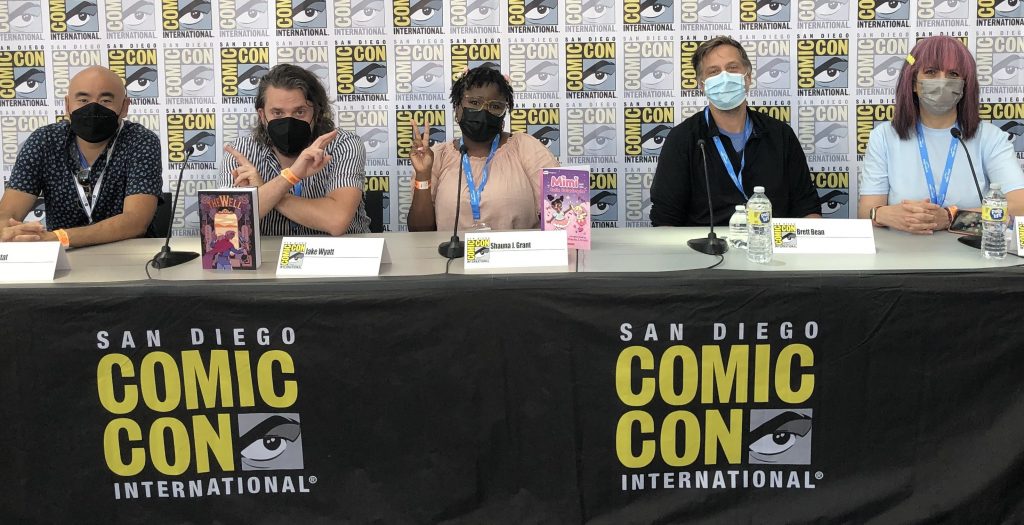Adventure Beyond the Screen

The CBC Graphic Novel Committee returned to San Diego Comic-Con International (SDCCI) this year to host six awesome panels at the San Diego Public Library. For this series, we are going over each panel and sharing insights from authors, teachers, librarians, and more. CBC’s Sommer Wissner and John McCormack were on hand for the entire day.
We are back at it again with our second panel, Adventure Beyond the Screen.
This panel was all about how to get kids away from their various screens like TV, phones, tablets, and computers and how we can get them back to reading comics and graphic novels. The digital world is a huge place that can draw many kids in, but can we introduce them to newer things? We can often see similarities in how the former relates to TV shows and movies. Both are visual forms of media that can both show and tell a story without needing as many words as a novel, but how can we get more readers reading comics instead of waiting for the next TV show or movie?

Moderator Tina Lerno brought this question to the panelists, showcasing the experience of each author and their books in relation to it. Her interest in the topic and consideration of the books and author brought an eager, happy crowd to watch.
Each of the authors was given topics to speak to, discussing their lives and motivations.
Dan Santat discussed how his love of cartoons brought him into comics and how “my gateway into comics was Marvel comics.” In his perspective, it can be a natural projection for an audience of the screen to turn into a reader of comics. We may not need to force kids away from the screen, they may want to hear more about the shows they are interested in and that can introduce them to comics and graphic novels.
Brett Bean agreed with his fellow panelist’s statement. “Often comics and video games and cartoons go hand and hand.” All of these media are a form of content, fighting for the next big thing to bring people in. The screens are faster about it, but both are drawing in audiences and readers as they wait for the next big thing. We just need to “get kids to want to find it.”
He was also able to comment on webcomics as screen media too. “It’s not going backwards. We just flipped the screen to books now.” It’s not the case to get kids away from their screens, but we can bring the content to them in a different way than print media.
A subject that Shauna J. Grant wanted to speak on too, “webcomics are a thing too.” She explained that the difference between comics and the screen isn’t too divided, because being able to draw her favorite characters (both on screen and in comics) drew her in. “It helps kids to focus on comics as an art too” and she’d like to see, “kids write their own comics and stories” from this too.
Jake Wyatt mentioned that we should “accept that screens can be reading too.” We shouldn’t force an audience to read since that will only force people away. His solution was “you want a comic reading with low friction.” In this sense, lower fiction would mean smaller blocks of texts and bigger panels of pictures. The reader will consume it faster, but you’ll get more readers in the end.

Find the info on the moderators and panelists with links to their digital platforms. Click on each book title to see how to get a copy of your own.
Moderator:
- Tina Lerno – Digital Content Librarian and Comics Specialist, Los Angeles Public Library
Panelists:
- Brett Bean (Zoo Patrol Squad) – Penguin Workshop
- Shauna J. Grant (Mimi and the Cutie Catastrophe) – Scholastic / Graphix
- Dan Santat (The Aquanaut) – Scholastic / Graphix
- Jake Wyatt (The Well) – Macmillan / First Second
Next week: a recap of the Retold, Reimagined, and Refreshed panel.

